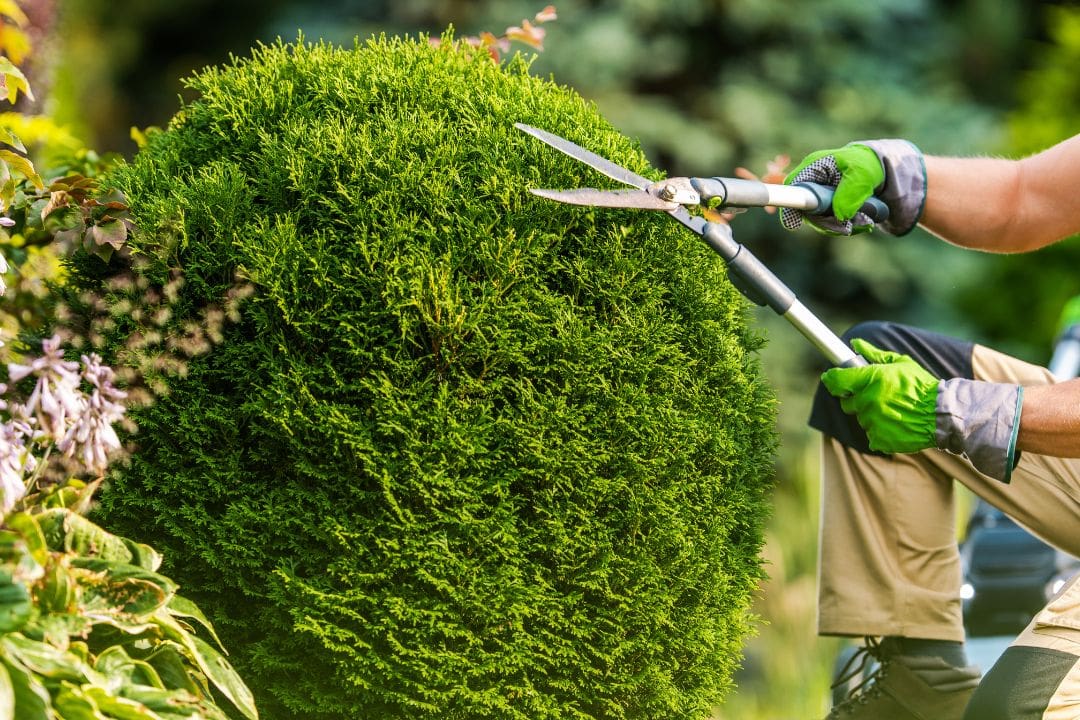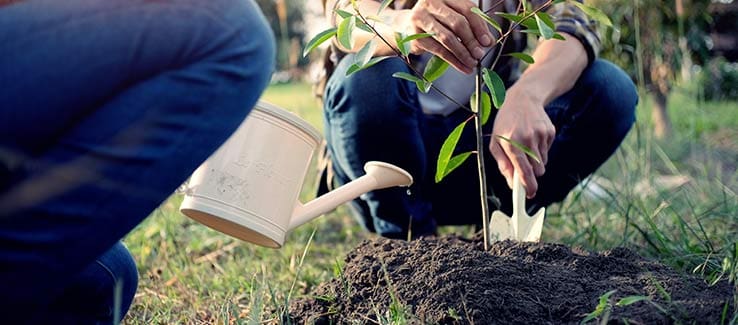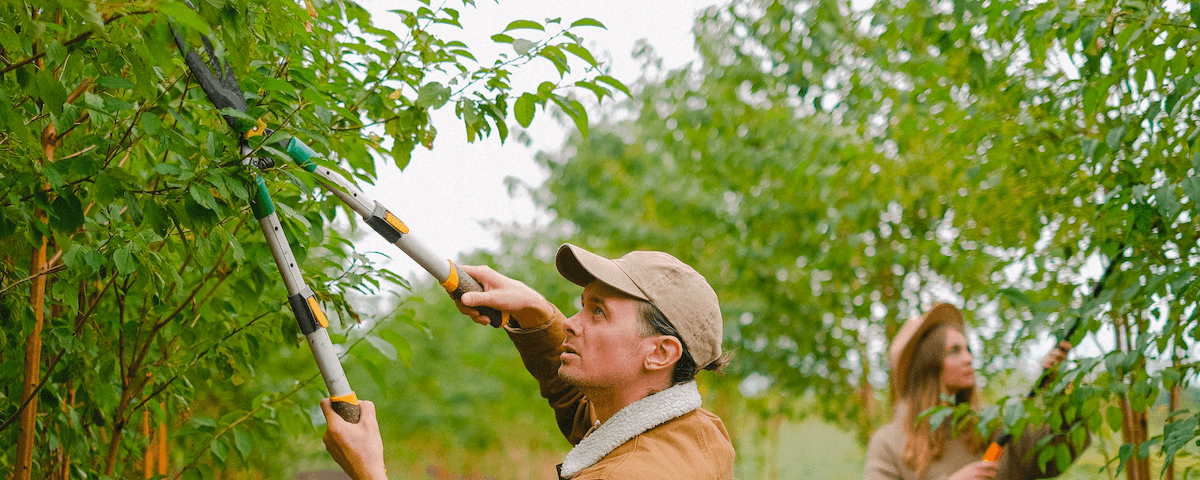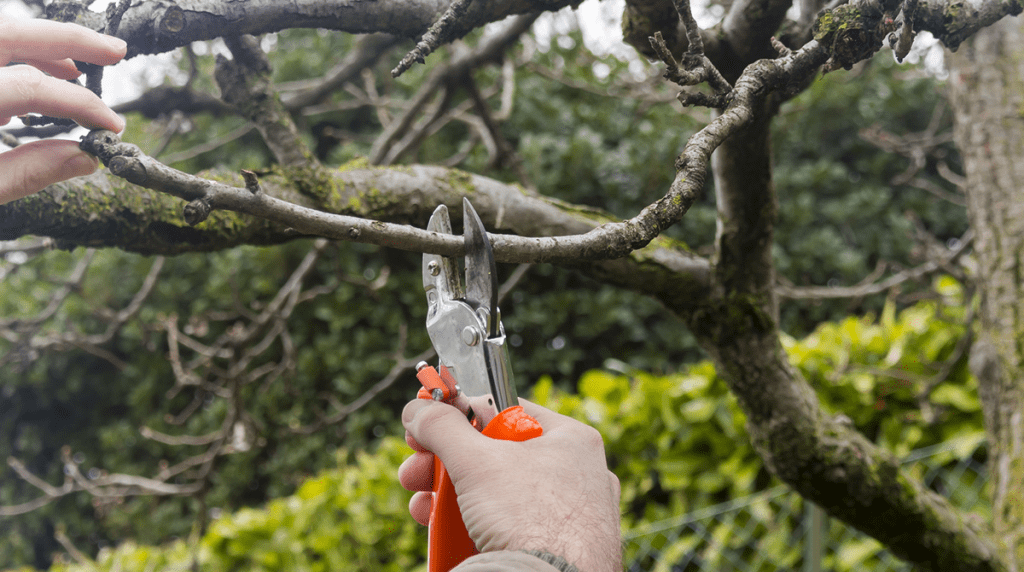Tree Trimming
7 Winter Tree Care and Maintenance Tips


Hey there, winter tree lovers!
Looking to keep your leafy friends healthy and thriving this season? Well, you’re in luck! I’ve got 7 expert tips to share that will help you take care of your trees during the chilly months ahead.
From pruning techniques to protecting against winter weather and preventing diseases, we’ve got you covered.
So grab your gloves and let’s dive into some winter tree care and maintenance!
Pruning Techniques for Winter Trees
During the winter season, I always make sure to use proper pruning techniques for maintaining the health and shape of my trees.
Pruning is an essential practice that promotes tree growth and prevents potential hazards. When pruning in winter, it’s crucial to remove dead or diseased branches, as they can attract pests and diseases. Additionally, thinning out overcrowded branches allows for better air circulation and sunlight penetration, resulting in overall improved tree health.


To ensure proper pruning, make clean cuts at a slight angle just outside the branch collar, avoiding leaving stubs or damaging the collar itself. It’s also important to prune with the natural shape of the tree in mind, maintaining its aesthetic appeal.
Protecting Trees From Winter Weather
To protect my trees from harsh winter weather, I frequently cover them with burlap or wrap them in tree blankets. This helps create a protective barrier against freezing temperatures, strong winds, and heavy snowfall. Here are three key ways in which these coverings benefit my trees:
- Insulation: The burlap or tree blankets act as insulation, trapping heat and creating a microclimate around the tree. This helps prevent frost damage and keeps the tree’s tissues from freezing.
- Wind protection: By wrapping the tree, I shield it from strong winds that can cause desiccation and damage branches. The covers also reduce the risk of windburn, a condition where cold, dry air damages foliage.
- Snow load reduction: The burlap or tree blankets help lessen the weight of snow on the branches, preventing them from breaking under the strain. They also protect against the accumulation of ice, which can cause further damage.
Preventing Winter Tree Diseases
As I protect my trees from harsh winter weather, I also take preventative measures to avoid winter tree diseases.
Winter tree diseases can cause significant damage to the health and appearance of trees, so it’s crucial to be proactive in preventing them.
One of the most effective ways to prevent winter tree diseases is through proper tree maintenance and care. This includes pruning dead or diseased branches, as they can serve as an entry point for pathogens.
Additionally, maintaining good soil drainage and avoiding overwatering can help prevent the growth of fungi and other disease-causing organisms.
Regularly inspecting trees for signs of disease and promptly treating any issues that arise can also be beneficial.


Winter Mulching for Tree Health
I mulch my trees in winter to promote their health and protect them from harsh weather conditions. Winter mulching is a crucial step in maintaining the well-being of your trees during the colder months.
Here are some key reasons why I choose to mulch my trees:
- Insulation: Mulch acts as a natural insulator, providing a layer of protection for the roots against extreme temperatures.
- Moisture retention: By preventing excessive evaporation, mulch helps retain moisture in the soil, ensuring that the trees receive adequate hydration.
- Weed suppression: Mulch acts as a barrier, preventing weed growth and competition for nutrients.
By mulching my trees, I create a nurturing environment that supports their growth and resilience in the face of winter challenges.
With proper mulching in place, it’s time to move on to the next important topic: proper watering for winter trees.
Proper Watering for Winter Trees
Mulching my trees in winter not only promotes their health and protects them from harsh weather conditions, but proper watering is also crucial for their well-being during the colder months.
Winter trees may not require as much water as they do in the warmer seasons, but neglecting their hydration needs can still lead to significant damage.
It’s essential to ensure that the soil around the trees remains moist, but not waterlogged, throughout the winter. Overwatering can lead to root rot, while underwatering can cause dehydration and stress.


To maintain the proper moisture balance, it’s recommended to water the trees deeply once every 2-3 weeks, depending on the weather conditions. This will allow the roots to access the necessary moisture for survival without risking excessive saturation.
Dealing With Winter Tree Pests
To effectively protect my trees during the winter, I need to be aware of potential pests that can cause damage. Here are some common winter tree pests to watch out for:
- Scale insects: These small, immobile insects attach themselves to the branches and leaves of trees, sucking out sap and causing yellowing and wilting.
- Spider mites: These tiny pests feed on the undersides of leaves, causing discoloration and webbing. They thrive in dry, winter conditions.
- Bark beetles: These beetles burrow into tree bark, creating tunnels and galleries that disrupt the flow of water and nutrients, leading to tree decline.
To prevent and manage these pests, I can consider using horticultural oil sprays, introducing beneficial insects, and practicing good tree hygiene by removing infested branches and leaves. Regular monitoring and early intervention are crucial in maintaining healthy trees during the winter months.
Winter Tree Inspection and Maintenance
As a tree care professional, I understand the importance of conducting winter tree inspections and maintenance to prevent damage and ensure the health of the trees.
One key aspect is preventing winter tree damage by removing any weak or overhanging branches that may be vulnerable to snow or ice accumulation.
Additionally, pruning during winter can help shape the tree’s structure and promote healthy growth.
Lastly, monitoring the health of the trees during winter is crucial to identify any signs of disease or pest infestations that may require immediate attention.


Preventing Winter Tree Damage
One important step in winter tree care is conducting a thorough inspection and performing necessary maintenance to prevent winter tree damage. To ensure the health and safety of your trees during the winter season, consider the following:
- Inspecting the tree for weak or damaged branches: Look for any signs of cracks, splits, or decay that may make the branches more susceptible to breaking under the weight of snow or ice.
- Trimming and pruning: Remove any dead, diseased, or crossing branches to promote good tree structure and reduce the risk of damage.
- Protecting the tree’s root system: Apply a layer of mulch around the base of the tree to insulate the roots and provide moisture retention.
Pruning During Winter
I continue inspecting and maintaining my trees during winter by pruning any necessary branches. Pruning during winter is important for the health and safety of the trees. It helps remove dead or diseased branches, improves the tree’s structure, and promotes better growth in the coming spring.
When pruning, I make sure to use clean and sharp tools to make precise cuts. I start by removing any branches that are crossing or rubbing against each other, as this can lead to damage and disease. I also remove any weak or damaged branches that may pose a risk of falling during winter storms.
Monitoring Tree Health
Continuing the inspection and maintenance of my trees during winter, I closely monitor their health to ensure they remain in optimal condition. Here are three key aspects I focus on when monitoring the health of my trees:
- Branch Structure: I carefully examine the branches for signs of damage or disease. I look for broken branches, cracks, or decay, as these can indicate potential hazards during winter storms.
- Bark Condition: I inspect the bark for any abnormalities, such as peeling, discoloration, or the presence of pests. Healthy bark should be intact and free from any signs of distress.
- Foliage Appearance: I observe the color and density of the leaves. Yellowing or thinning foliage can indicate nutrient deficiencies or pest infestation, warranting further investigation.


Hello there! I’m Logan Foster, the green-thumbed social media marketer behind the vibrant world of 1800TreeGuy.com. With roots firmly planted in arboriculture, I’ve branched out to help clients cultivate their dream outdoor spaces, one leafy canopy at a time. My knack for nurturing nature is more than a profession—it’s a way of life.
When I’m not talking trees and teaching the art of arboreal care, you can find me cheering on the Bulldogs—my alma mater’s pride and my forever team. My environmental studies there didn’t just teach me about ecosystems; they instilled a lifelong passion for protecting our planet.
Off the clock, I’m an adventurer at heart. Whether it’s trekking the Appalachian trails, pedaling down a mountain path, or crafting guides to share the wonders of the wild, I’m happiest with soil under my nails and the sun on my face. And let’s not forget Yoda, my pug sidekick. He may not have mastered the art of stillness, but his joyful grins are my daily dose of happiness.
I’m all about making connections—between people and the great outdoors and between my clients and their ideal landscape visions. My approach is personal; every tree has a story, and every garden reflects its caretaker.
If you want to green your scene or share in my outdoor escapades, give me a shout on Instagram or Facebook. Let’s cultivate a conversation and grow a community rooted in a love for the lush life.














